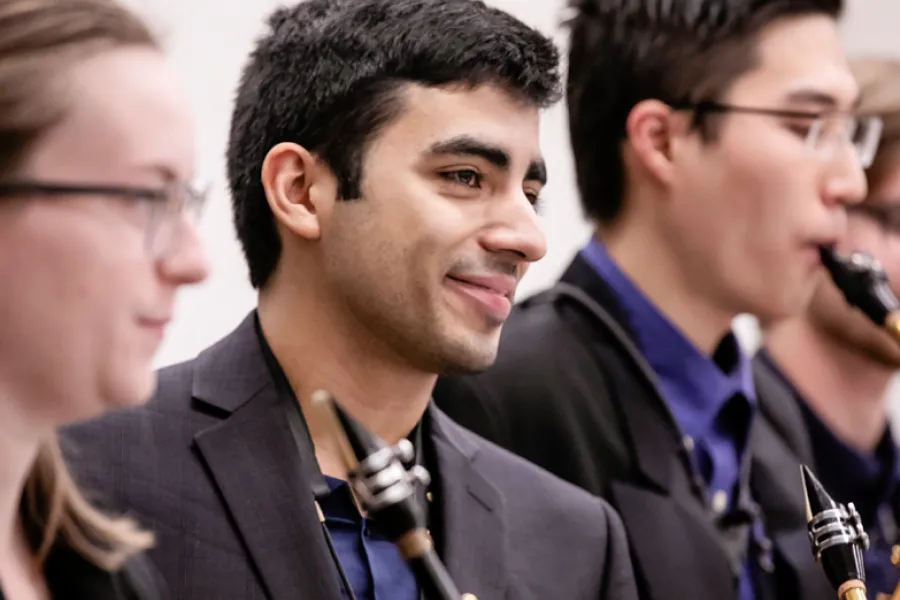CHAMPAIGN, Ill. – Everything is chaos. We don’t have all our music. We don’t have a permanent rehearsal space. I’ve never had my own ensemble before. Everything is unfamiliar, and everything has come together much more last-minute than I had hoped for. But for this first-ever rehearsal of the University of Illinois Saxophone Ensemble we all share one thing – excitement.
The energy in the room is electric; everyone buzzes with anticipation.
“Thank you for your enthusiasm, and for showing up here late on a Wednesday night,” I tell the group. “Let’s tune up.”
As we do, I’m thinking: “What is this going to sound like? Will the group only be as strong as its weakest link? Or will the whole be greater than the sum of its parts?”
I think back to my past experiences with saxophone ensembles, some of which sounded like a cacophony of lawnmowers and others that resembled the best of symphony orchestras. With this vivid dichotomy in my mind and the score to Ravel’s “Le Tombeau de Couperin” still warm from the photocopier, we start the piece.
The opening fanfare of this piece usually features heralding winds and a full string section, but with only saxophones, I am expecting something more discordant. To my surprise, the first sounds I hear have stunning blend and intonation. I'm taken aback by how luscious and warm the ensemble sounds, especially considering how unusual it is for saxophones to try to imitate the different voices of an orchestra, such as flutes, violins and cellos. How can an ensemble filled with everyone from a freshman in music education to doctoral performance students sound so mature?
I'm suddenly at a loss for what to rehearse. Thinking on my feet, I echo back to them my mantra for playing orchestral music in a saxophone ensemble: “There are no saxophones in saxophone ensemble.”
“You not only need to know your part, but you also need to know what instrument you are imitating at any given moment and how best to change your sound to match that instrument,” I say.
Since “Le Tombeau de Couperin” did not originally include saxophones, I encourage them to try to manipulate their sounds to avoid sounding like saxophones. We continue the rehearsal, fixing a few notes here or an odd rhythm there, but it’s difficult for me to hide an enormous grin.
Even after two hours late on a Wednesday night, the energy remains high. Everyone is eager to know what we are going to play next. I wish I could say this incredibly successful first rehearsal of the University of Illinois Saxophone Ensemble is a result of my experience and leadership, but that is simply not the case. I owe the spectacular performances to the hard-working members of the group. They inspired the formation of the group, and without their unyielding positivity and motivation, this ensemble wouldn’t be what it is today – one of the most fun and unique ensembles at the University of Illinois.
+++
Photo caption: Gabriel Lamar Pique founded the University of Illinois Saxophone Ensemble.
Image by L. Brian Stauffer
Story by Gabriel Lamar Pique, Graduate Student in the School of Music, reposted from the Illinois News Bureau (February 20, 2019).
Editor's notes:
The University of Illinois Saxophone Ensemble will perform Friday, March 8 at the North American Saxophone Alliance Region 5 Conference. The peformance will be at 4 p.m. in the Steffen Music Center Band Room at Marin University in Indianapolis, Indiana.
Subscribe to Behind the Scenes for short blog posts, photos and videos from Illinois faculty, researchers, students and staff about their work and lives. Send an email with “SUBSCRIBE BTS” in the subject line.
